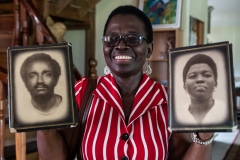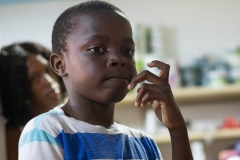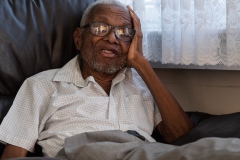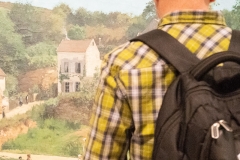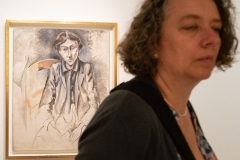My engagement with photography began in front of the camera, as a child model, aged 4 (four guineas a session, paid to my mother).

Photographs by Ray Harwood (personal collection)
My godfather, Ray Harwood (1926-2017), took a course in photography at Regents Street Poly when he was discharged from the RAF after the second world war. Unable to afford film, he took work as a photographic assistant for Conde Nast, becoming assistant to Cecil Beaton (including the 1953 Coronation photographs, that’s him on the right below, HRM on the left) and then a staff photographer for Vogue, before establishing his own studio.

Queen Elizabeth II; Cecil Beaton and two assistants (John Drysdale; Ray Harwood)
by Patrick Matthews, 1953.
On display at Museum Kampa, Prague, Czech Republic.
The smell of film, the buzz of the strobe units, the weight and sound of a Pentax Spotmatic and a Hasselblad, have formed a lifelong visceral bond with photography. And photography exemplified for me the opportunities for working-class social mobility in post-war Britain, though I took a different path. I learned to process and print at the age of ten, and have taken photographs in a somewhat disorganised and incoherent way since. I don’t have my earliest images to hand, but here are three from the late 80s, processed and printed in our bathroom in Hackney. Like all my photography until about 18 months ago (shortly before Ray died), it is personal and focused on immediate family. I don’t think the images have aesthetic or artistic value, more personal and evocative of a period in our lives. I don’t think they would withstand any detailed analysis as images.



The book in the third image (my son’s favourite picture) is an Open University collection, and it is open at Pierre Bourdieu’s paper on the three forms of capital (which I was reading at the time), ultimately more influential in shaping my trajectory than photography. Just short of sixty years on from my initial encounter, the time came to become reacquainted with photography, delve deeper and weave together the various strands of my life and interests, which is challenging, exciting, enthralling and more. And now I have my own period Spotmatic and Hasselblad, but no studio in Knightsbridge …



